With his Bayreuth theatre, did Richard Wagner anticipate cinema? Often compared to the Wagnerian Gesamkunstwerk on the strength of its all-embracing dimension, the art of cinema has regularly drawn on the unequalled musical and dramatic substance ofThe Ring of the Nibelung.
“The most famous, the most performed, the most thrilling, and the most recorded opera cycle”: these eulogistic words are from a promotional text for the video release of Richard Wagner’sThe Ring of the Nibelung by the Metropolitan Opera of New York (2010 – 2012). This same text boasts, amongst other things, of the hundreds of thousands of people that watched performances of the Ring Cycle, not only at the Met., but above all in cinemas the world over, via satellite broadcast[1]. This emphasis on a technological dissemination of Wagnerian opera harks back to one of the objectives of the earliest promoters of the audio-visual industries. Indeed, from the period of the pioneer Thomas Alva Edison at the end of the 19th century onwards, the eventual possibility of linking up the apparatus for recording both sound and image had nourished the dream of offering remote populations the most spectacular of urban entertainments. As for the public demonstration on 6th August 1926 of Vitaphone’s motion picture sound process, it took place exactly fifty years after the first performancein 1876 of the complete Ring cycle for the inauguration of the Festpielhaus in Bayreuth. The specific arrangements of the Wagnerian stage (darkness, a concealed orchestra, the focus on the “stage image”, the illusion of depth by the bringing forward of the proscenium...) prefigure certain characteristics of the cinema auditorium equipped with loud-speakers.
This vision of Wagner
as a prophet of cinema[2]has
influenced aesthetic reflections on the filmic medium. Such reflections have
been inspired by the concept of the Gesamkunstwerk, as it is presented in Das Kunstwerk der Zukunft(The Artwork of the Future) (1849) or Oper und Drama(Opera and Drama) (1851), to signal the emergence at the heart of technical and scientific modernity of a great “synthetic theatre”, bringing about a “renaissance of Tragedy”[3]. Echoing the frustration experienced by Nietzsche regarding the staging of TheRing at Bayreuth[4], as well as certain reservations on the part of the composer himself[5], these theoreticians saw in cinema a way of overcoming the supposed limits of stage production. As the critic Emile Vuillermozclaimed in 1927, “... If he had been born fifty years later, Wagner would have written his Ring cycle not for the stage but for the screen. [...] If he had had free recourse to the prestigious resources of cinema, he would have built, not a theatre, but a cinema at Bayreuth.”[6]The film-maker Abel Gance took a more ironic view: “A new formula for opera will be born. We will hear the singers without seeing them, oh joy, and the Ride of the Walkyries will be made feasible.”[7] By this argument – still regularly put forward today in this numerical age – the techniques of cinema are capable of realising the slightest nuances of a dreaming poet-musician’s imagination, more particularly in the Ring cycle, underwater pursuits, air-born gallops, fantastic combats, beings that become invisible and the progressive transformations of the sets. But the cinema has above all furthered the ideal of dynamic stylisation which animated, at least with the work of AdolpheAppia onwards, the majority of renovators of the Wagnerian stage. As the experiments of a film-maker like S.M. Eisenstein (director of the 1940 Bolshoi Walküre and inventor of a “vertical” production closely linking musical and visual gestures) demonstrate, cinematic procedures aim to provide directors with a vast iconic palette, as subtle, malleable and poly-expressive as the music itself.
 Les Nibelungen - la mort de Siegfried - Fritz Lang, 1924 © Collection Christophel
Les Nibelungen - la mort de Siegfried - Fritz Lang, 1924 © Collection Christophel
The model of Wagnerian
opera profoundly inspired the codes of large-scale cinema productions, which
were established during the silent movie period through showings using symphony
orchestras. The release of
Der Nibelungen(Fritz
Lang, 1924) in this context represents a major event. Although far removed in
conception from the Wagnerian version of the legend, the film’s early showings
worldwide,which were accompanied by extracts borrowed from the Bayreuth master,
made constant references to the
Ring
cycle. More generally, the symbiosis between drama and music, as championed by Wagner, occupied pride of place amongst narrative procedures that have continued to dominate, even today, the production of films. The use of leitmotif was thus imposed on the musical system established in Hollywood during the thirties and forties by composers emerging from European post-romantic culture (Erich Wolfgang Korngold, Max Steiner, Franz Waxman)
[8]. A French Wagner specialist and contemporary of these composers enthused over their work: “... anyone who wanted to analyse the Ring cycle bar by bar to compare it with such accomplished film scores [...] would no doubt be astonished to discover that Wagner’s music was, so to speak, written for the cinema”.
This alliance between artistic idealism and the cultural industry, as the more radical critics denounced it[9], has manifested itself in contemporary blockbusters such as the Star Wars franchise (on-going since 1977) and, more directly still, Lord of the Rings (based on Tolkien, 2001-2003) that ally narrative breadth and large-scale spectacle. Not only do the internationally popular symphonic scores for these productions make thorough use of leitmotif, but their narratives draw on the mythological world already reinvented in The Ring of the Nibelung[10].
This relationship between the mass media and the work of Wagner also appears in the fragmentation of the operas into individual numbers, that is, the selection from them of “greatest hits”, on the traditional model of concert arias or song anthologies. Numerous films have indeed had recourse to extracts from the Ringcycle in the most diverse contexts (from drama to cartoons, as well as burlesque, documentaries, science fiction etc.) in order to offer an epic or dramatic counterpoint to the visual action. A memorable shot from Birth (Jonathan Glazer 2004) testifies to this. The camera focusses at length on the face of the heroine (Nicole Kidman), who is watching a performance of Die Walküre. Although it echoes personal preoccupations that are completely divorced from the musical storm raging off camera, the tormented Prelude to act I is marvellously adapted to the expression of her inwardly troubled state.
 Excalibur, John Boorman, 1981, avec Nigel Terry © Collection Christophel
Excalibur, John Boorman, 1981, avec Nigel Terry © Collection Christophel
The poignant, funereal
harmonies relayed by the best-known passages of
TheRing have for many years imposed a morbid vision of Wagner,
stamped with a sombre solemnity. Whilst some have sought to appropriate this
musical power, others have reduced it to swingeing ideological caricature,
harking back unfailingly to Hitler’s infamous appropriation of Wagner. Thus Siegfried’s Trauermusikin Götterdämmerunghas been associated just as easily with the first leader of the Soviet Revolution in Three Songs about Lenin (D. Vertov, 1934), or with the Arthurian heroes of John Boorman’s 1981 Excalibur, as with the implacable attitude of the Nazi officers in American fiction from the forties onwards, in which intensive use is made of Siegfried’s leitmotif to qualify the German aggressor, particularly in the propaganda films of Frank Capra. Over and above their function in ridiculing the robust phenotype of Wagnerian heroines (from Bugs Bunny to Fellini), the rousing accents and galvanising virtues of the Ride of the Valkyries haspunctuated the cavalcade of the Ku Klux Klan in The Birth of a Nation (D. W. Griffith, 1915), then the German and Japanese air raids during Axis news footage during the Second World War, before culminating in a more ambiguous manner – the music being broadcast by the protagonists themselves – during the celebrated helicopter attack in Apocolypse Now (F. F. Coppola, 1979).
Over and above such totalitarian connotations, cinematic references to Wagner have also evoked the mythical backgrounds of his music dramas. More than anyone else, Jürgen Syberberg, in both his theoretical writings and his films, sought tirelessly to explore the multiple facets of the great composer in order to secure his redemption. His complex portraits of King Ludwig (1972) and of Hitler (1977) are peppered with extracts from the Ring Cycle illustrating as much the emphatic perversity of oppressive powers (the Funeral March from Siegfried, the Descent intoNibelheim...) as the resurgence of the romantic ideals perverted by the 3rd Reich and by the materialism of capitalist societies (the abundantly lyrical finale of Götterdämmerung)[11]. More recently, in The New World (Terrence Malick, 2007), the Prelude to Das Rhingoldsignalled the ambivalent attitude of the first settlers on American soil, ranging from romantic pantheism to the conquest of virgin territory. As for the Entrance of the Gods into Valhalla from the same opera, in Alien Covenant (Ridley Scott, 2017), it marks the triumph ofan artificial being’spretentionsto divine status of. All these instances demonstrate the extent to which TheRing remains influential in the troubled imagination of the 21stcentury, whether to evoke the weight of history or to reflect on the stakes involved in an eminently technological future.



































































